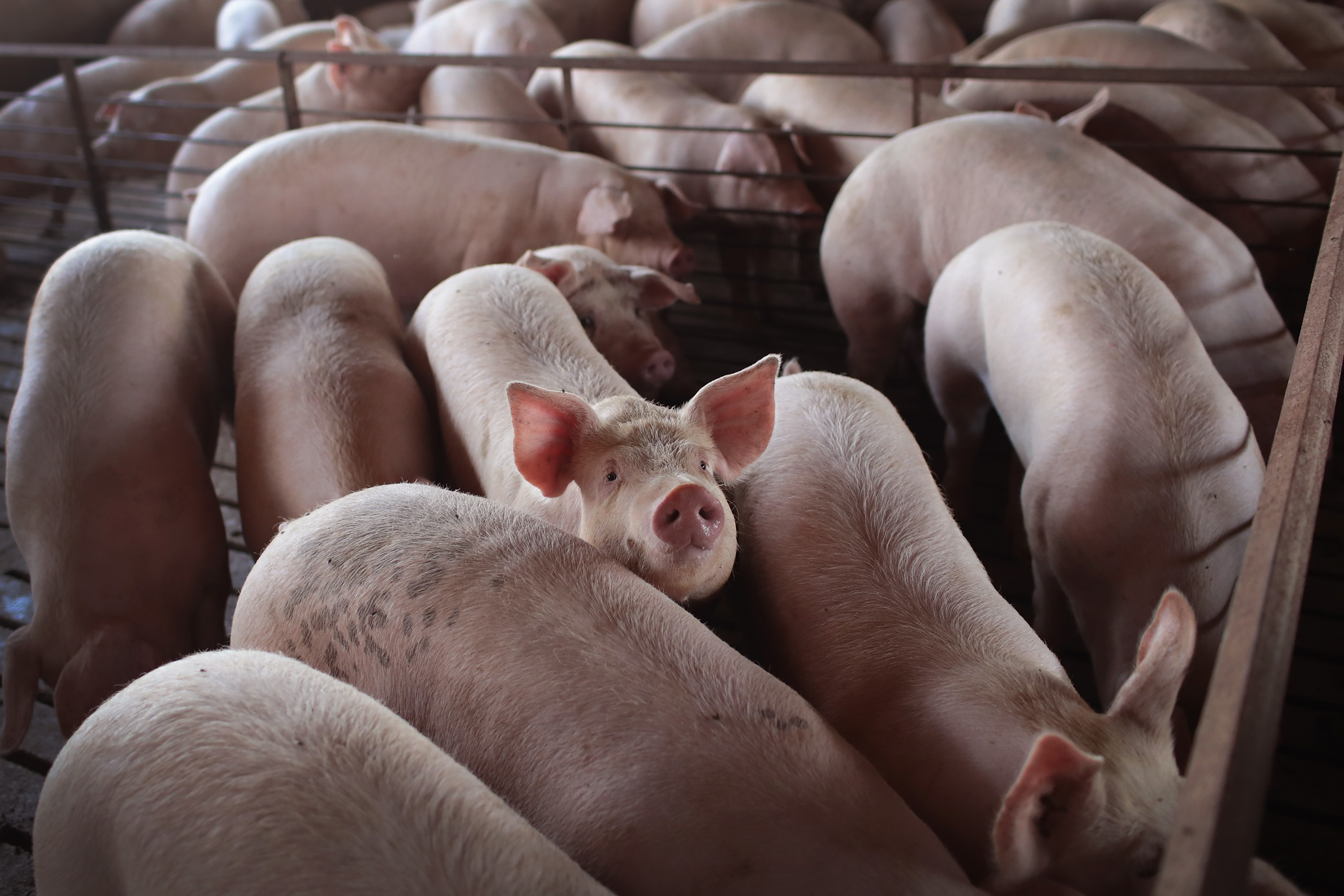Trump’s emergency aid to farmers could have negative side effects
American pork producers have been hit hard by the US trade war with China and other allies, but could be big beneficiaries of the aid program announced for farmers (SCOTT OLSON)
New York (AFP) – For US farmers affected by the trade war unleashed by President Donald Trump, the $12 billion in emergency aid from his administration’s is a temporary remedy, and it comes with several potential negative side effects.
The Agriculture Department announced the aid on Tuesday to help farm producers hurt by retaliation by major trading partners against US tariffs on steel, aluminum and tens of billions of dollars in Chinese products.
USDA said it would use a Depression-era farm support fund to make direct payments to producers of soybeans, sorghum, corn, wheat, cotton, dairy and hogs.
It also intends to purchase excess production of commodities such as fruits, nuts, rice, legumes, beef, pork and milk for distribution to food banks and other nutrition programs.
The size of the aid program is “unprecedented,” said Joseph Glauber, a former USDA economist now at the International Food Policy Research Institute.
But its effectiveness will be limited, he said, and it creates a “moral hazard.”
And ironically, depending on the criteria used, some of the benefits could go to Chinese-owned companies.
“The pork industry is dominated by very large corporations,” said Chris Hurt, agricultural economist at Purdue University, in Indiana. “The largest hog producer in the US, Smithfield, is owned by a Chinese company.”
Agriculture Secretary Sonny Perdue said the new aid will not need congressional approval, but the program drew sharp criticism from many legislators, including Republicans.
National Farmers Union President Roger Johnson said crop prices are falling and farmers’ “livelihoods are on the line with every tweet, threat or tariff action that comes from the White House.”
Republican Senator Ben Sasse, a frequent Trump critic, said in a statement: “This administration’s tariffs and bailouts aren’t going to make America great again, they’re just going to make it 1929 again.”
But after the US economy grew 4.1 percent in the second quarter, and the European Union agreed to a ceasefire in the trade confrontation with the US, Trump declared it a victory for his tough policies.
– Moral hazard? –
In announcing the aid for farmers, Perdue acknowledged that US farms were being hurt by what he called “illegal retaliation” to the tune of $11 billion so far.
And EU officials downplayed Trump’s claim they had made a commitment to buy more US soybeans.
Meanwhile, analysts say that other industries caught up in the trade war may now expect relief from the government.
“Knowing this administration, they’ll design a bailout to help only massive agro-businesses who will use the money for stock buybacks,” said senior Democratic Senator Chuck Schumer said.
“And where does the bailout stop? What about people who use steel and aluminum? What about other goods that have been targeted by our foreign competitors? Are they going to get bailouts too?
US farmers already receive about $20 billion a year from the government through various programs.
But the new aid “creates a bit of a moral hazard,” Glauber told AFP. “If you compensate producers right now, there is no real urgency to resolve trade disputes for the farmers.”
And the longer-term loss of markets for American crops is far worse that the short-term financial hit, he said.
Farmers want trade not “a Band-Aid on a broken leg.”
China currently buys a third of US soybeans, and while importers stockpiled them in the two months before punitive tariffs hit in July, they likely will turn to Brazil to buy what they need, and it may be hard to win back market share.
And even if the EU starts buying more from US farmers, China is the destination for two-thirds of the world’s soy shipments.
USDA said part of the aid funding will go to help fine new markets for farm products.
Another question remains how the program will impact falling crop prices and even the cost of farmland, once the payments begin, which the USDA said should be in early September.
“The land market could get distorted. Crop farmers are often willing to invest the extra money in land, that would hike the prices,” Purdue University’s Hurt said.
Disclaimer: This story has not been edited by Siliconeer and is published from a syndicated feed. Siliconeer does not assume any liability for the above story. Validity of the above story is for 7 Days from original date of publishing. Content copyright AFP.


